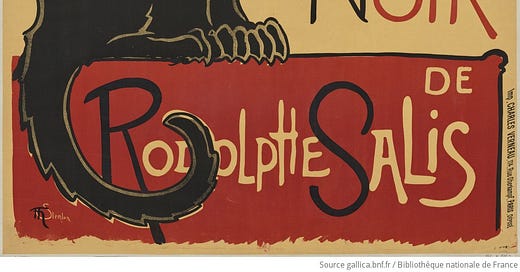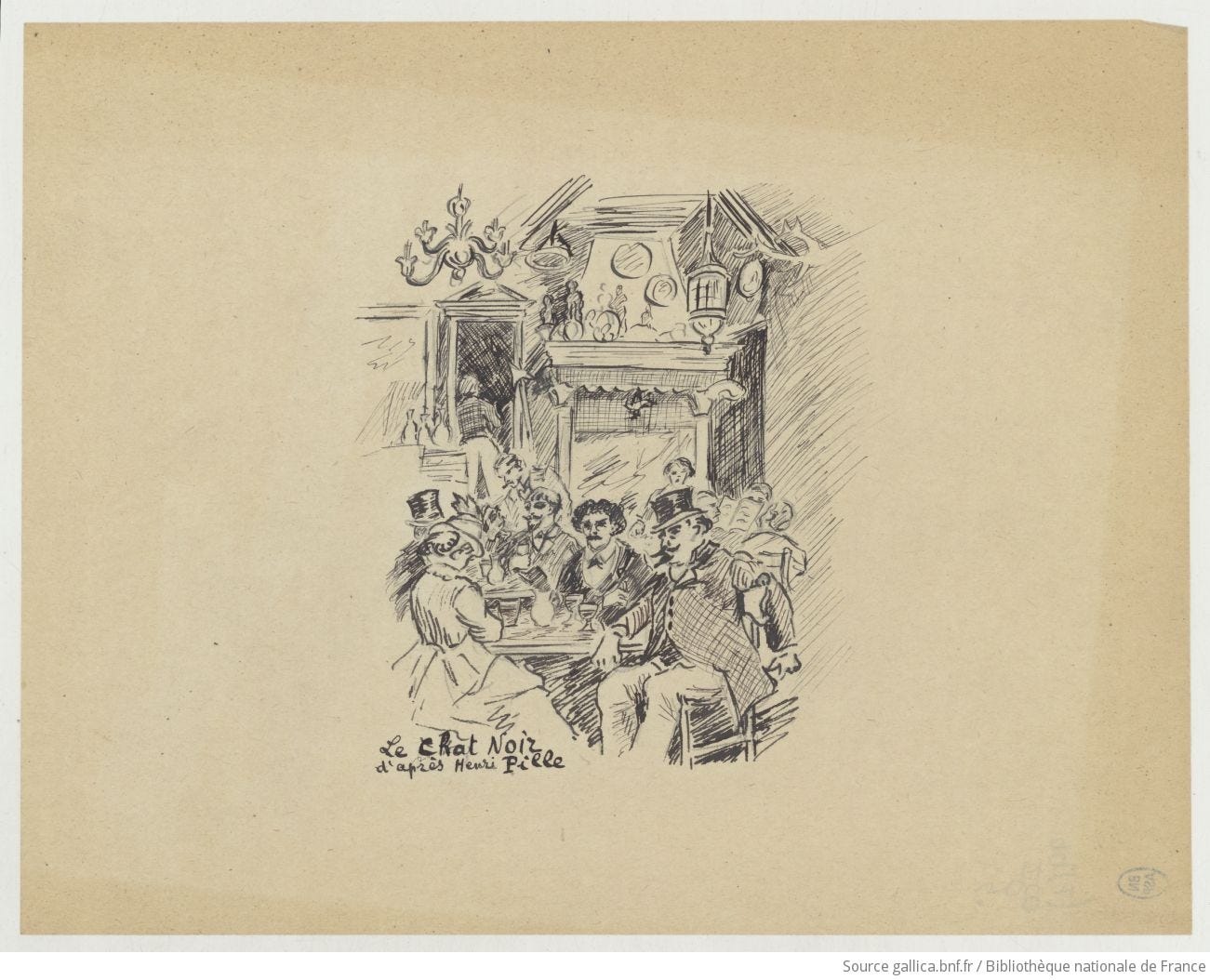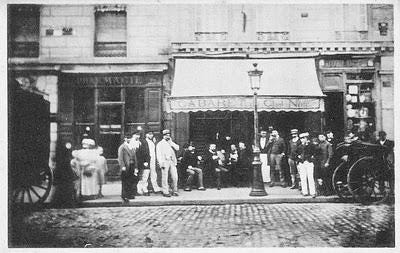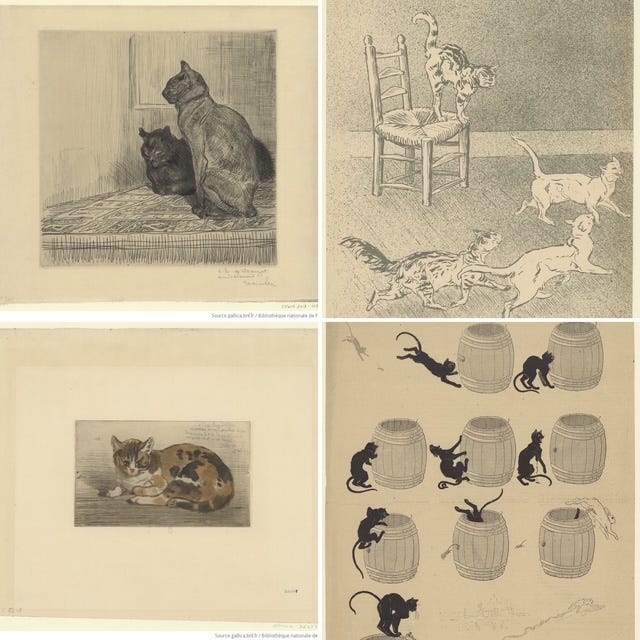Chances are you have seen the poster above sometime in your life. It’s one of those iconic images that represents ‘Paris’. But it’s actually an advertisement for a cabaret known as Le Chat Noir, or the Black Cat, which existed between 1881 to 1897.
Le Chat Noir was a unique hangout, offering Parisians a place to drink while enjoying live entertainment on a stage. It was created by what was said to be an eccentric man named Rodolphe Salis. (More on him later.)
The Chat Noir cabaret was first located on Boulevard Rochechouart on the southern end of Montmartre. It was a humble, two-room space that held no more than 30 people at a time. It soon became filled with regulars from the art, music, and literary communities of Paris. Every night, there would be singing, poetry readings, and other live entertainment.
The personalities behind Le Chat Noir
There was quite a cast of characters involved in Le Chat Noir, more than two dozen from what I could see. Here are a few:
Rodolphe Salis - Not only did he create the cabaret, he also served as Master of Ceremonies, in which he introduced the evening’s entertainment and greeted guests (or insulted them as a joke if they left early). It seemed nobody escaped his sharp, witty tongue.
“The Chat Noir is the most extraordinary cabaret in the world…
It’s the great success of the age! Come on in!!”
- promotion for the Chat Noir cabaret written by Rudolphe Salis in 1882
Henri Rivière - Rivière and a man named Henry Somm did something really cool at the time: they created a Shadow Theater in 1886 that served as a new form of entertainment. They designed animated images on zinc plates or wood and then projected them using special lighting to show various storytelling scenes. To accompany the scenes, a piano player would improvise musical sequences and Salis himself would do the narration.
For context, this was before cinema and animations of this type existed, so this was very, very ahead of its time:
Théophile Steinlen - a master illustrator, he’s the one who created the famous poster at the top of this article. He made a living doing illustrated advertisements, which were the way companies promoted their products back then (I wrote about this before). Interestingly, Steinlen was a cat lover and drew a LOT of cats. (For cat lovers, I created a little montage at the end of this write-up.)
With growing attention, Le Chat Noir moved house in 1885 to what was then called rue de Laval (today rue Victor-Massé), just a 10-minute walk from the old location.
Not just a cosy cabaret
To drum up interest, Salis created a magazine to help promote his cabaret, like an old version of a modern-day ‘Zine’. It was also called Le Chat Noir and only had four pages. It offered readers musings, advertisements, and other entertaining content.
This was at a time when there were tons of newspapers and magazines printed in Paris and around France. It was a very popular way for people to connect with their passion for the arts, for example, and keep up with the latest news and trends.
Sadly, Rudolphe Salis died in in 1897, bringing an end to Le Chat Noir as everyone knew it. Later, it did relocate to another address on Boulevard de Clichy, but it would never be the same — how could it without its enigmatic creator, host, magazine editor, and master of ceremonies?
A recommendation for you
Next time you’re in Paris, I highly recommend you visit Musee de Montmartre. While the area around Sacre Coeur is inundated with throngs of tourists, this remains somehow a relatively quiet place to learn about Montmartre. It has the history of Le Chat Noir and features the studio of artist Suzanne Valadon - an exquisite atelier where she painted her tableaux:
And finally, as promised, here are some of Steinlen’s cat drawings:
Sources:
https://actualite.nouvelle-aquitaine.science/le-chat-noir-entre-ombres-et-cinema/















This is my first time seeing this poster. I love it.
What a lovely dive into this small history. I do love these small looks into single histories that have, for one reason or another, lingered.